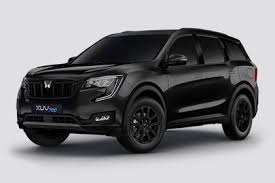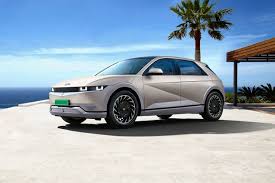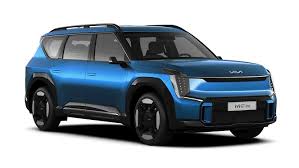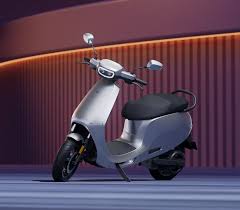Introduction
In India’s rapidly transforming electric SUV market, Mahindra is set to make a statement with its new Mahindra XUV700 -based electric SUV — the XEV 7e. This model is filling the gap between traditional ICE SUVs and the latest premium EV range, aligning with Mahindra’s ambitious “Born Electric” vision. The recent spotting of the test mule on Indian roads has further spiked anticipation, suggesting the launch could be sooner than anticipated.
- Latest Spy Photos: The XEV 7e has been caught testing on roads in various places in India, heavily camouflaged but showing characteristic design touches such as coupe-like proportions and a unique LED DRL configuration.
- Testing Information: The test mule looked production-ready, indicating Mahindra is far along in the development process. It has been reportedly spotted close to Mahindra’s Pune R&D center, which is where it develops its future electric vehicles.
Mahindra’s Born Electric Vision
Mahindra’s “Born Electric” vision is the company’s next quantum leap towards the mobility of the future. The soon-to-be-launched XEV 7e, based on the award-winning XUV700, is an integral component of this path towards electrification — bringing together Mahindra’s heritage SUV DNA and the latest EV technology.
 Mahindra’s Born Electric Model Lineup:
Mahindra’s Born Electric Model Lineup:
- BE.05: A crossover, coupe-bodied electric SUV that will cater to younger customers, which should appear by the end of 2025.
- BE.07: A full-size, family-driven SUV that prioritizes comfort and room, set to arrive in 2026.
- XUV.e8: The all-electric variant of the XUV700 (now termed XEV 7e), which will use its platform and body dimensions but EV-specific design and performance enhancements.
- XUV.e9: A high-end, coupe variant with a sportier look and more aerodynamic body profile.
Where the XEV 7e Fits into Mahindra’s EV Roadmap:
- Acts as a transition between Mahindra’s current ICE SUVs and its visionary BE line, providing brand continuity.
- It will be Mahindra’s first volume-production EV under the “XUV.e” sub-brand.
- Will be positioned to take advantage of Mahindra’s INGLO platform, with modularity, long range, and fast charging.
- Anticipated to launch before BE models, giving Mahindra credibility in the premium EV segment.
Strategic Positioning Against Competitors:
- Competes with Tata’s future Harrier EV and Safari EV, both launching in 2025.
- Competes with global players such as Hyundai Ioniq 5 and MG ZS EV, with a locally assembled, affordable option.
- Reinforces Mahindra as the homegrown player in the emerging premium EV SUV segment.
- Supports Mahindra’s vision to be India’s number one electric SUV maker by 2030.\
Spy Shots Reveal Key Details
The newest spy images of the Mahindra XEV 7e testing on Indian roads have provided an interesting sneak peek into the near-production design of the SUV. Even with heavy camouflage, several styling features confirm that Mahindra is merging recognisable XUV700 proportions with forward-looking EV-specific design elements. The overall posture appears muscular but refined, hinting at a move toward a more aerodynamic and premium design suited for the electric age.
Coupe-Style Silhouette Just like the XUV700:
- The XEV 7e carries over the XUV700’s overall form but adds a more swooping, coupe-style roofline, making it look sportier.
- The tall shoulder line and fast side profile of the SUV imply an emphasis on aerodynamics as well as on visual fluidity, something key to efficiency in EVs.
- Flush door handles and more rounded panel transitions indicate a contemporary design philosophy driven by Mahindra’s Born Electric concept cars.
Closed Front Grille, New LED DRL Pattern, Aero Wheels:
- As has been witnessed on the test mule, the conventional XUV700 grille is substituted by a closed-off front nose, which improves aerodynamics while bestowing the SUV with a futuristic EV persona.
- A C-shaped signature LED DRL strip runs through the front, probably marrying into the central logo element — a design language observed in Mahindra’s BE prototypes.
- The vehicle travels on aero-optimized alloy wheels that minimize drag and maximize range efficiency, a feature shared by next-generation EVs.
Reworked Bumper and Rear Light Bar:
- There is a redesigned rear bumper with more angular lines and built-in reflectors for a sporty look.
- A single-unit full-width LED light bar spans the tailgate, just like global EVs, providing it with a contemporary, integrated appearance.
- The housing for the license plate is placed lower, giving a cleaner and broader rear look that goes well with the coupe roofline.
Cabin Expectations (Based on Previous Teasers):
- On the inside, the XEV 7e should sport a twin 12.3-inch screen configuration for the infotainment and digital cluster — a configuration which has been previewed in Mahindra’s BE series interiors already.
- A minimalist dashboard presentation with touch-sensitive controls and premium recycled materials will add to the premium EV ambiance.
- Ambient lighting, flat-bottom steering wheel, and sophisticated connected features should make the cabin feel space-age and tech-centric in line with international EV trends.
Platform and Powertrain
At the core of the new Mahindra XEV 7e is the company’s state-of-the-art INGLO platform, a modular EV architecture that will underpin all future electric SUVs of Mahindra. Engineered with global collaborators such as Volkswagen, this platform is designed to be versatile, safe, and performant — accommodating various body styles, drivetrain configurations, and battery packs. The INGLO foundation provides the XEV 7e with the strength and sophistication needed to rival world-class electric SUVs and yet be specifically engineered for Indian road conditions.
Anticipated Battery Options (60–80 kWh):
- The XEV 7e will probably have two lithium-ion battery packs, with different ranges and performance capabilities.
- The lower 60 kWh pack will target affordability and city commuting, and the higher 80 kWh pack will target long-distance applications.
- Both packs will be liquid-cooled and offer rapid charging at up to 175 kW, enabling 0–80% charge in less than 30 minutes (claimed).
Range Estimate: 450–550 km (Claimed):
- Depending on the battery layout, the XEV 7e is likely to have between 450 and 550 kilometers of range (ARAI-rated) in a single charge.
- The aerodynamics and regenerative braking technologies will also boost real-world range.
- This places it head-to-head against the Hyundai Ioniq 5 and Kia EV6, which share similar range statistics.
Dual-Motor AWD and RWD Models Likely:
- Mahindra will provide rear-wheel-drive (single motor) and all-wheel-drive (dual motor) options to attract both efficiency-conscious and performance-conscious buyers.
- The AWD configuration will deliver enhanced traction and off-road functionality — being faithful to Mahindra’s SUV DNA.
- The RWD variant will focus on increased range and reduced energy use, perfect for city users.
175–250 PS Power Output Range (Expected):
- The base RWD version can develop about 175–200 PS, and the dual-motor AWD model can produce a maximum of 250 PS.
- Torque is delivered instantaneously, and 0–100 km/h comes up in less than 7 seconds (estimated).
- With low center of gravity and sophisticated suspension calibration, the XEV 7e provides refined as well as thrilling driving response, setting new standards for Mahindra’s electric performance aspirations.
Charging, Tech & Safety
The Mahindra XEV 7e is not only about electric performance — it’s also an exhibition of Mahindra’s state-of-the-art advancements in EV tech, charging solutions, and smart safety features. Equipped with an 800V electrical system, the XEV 7e is designed to provide quicker charging, improved efficiency, and superior energy management. The SUV will compete with premium international EVs by combining innovative features such as Vehicle-to-Load (V2L) capability, Over-the-Air (OTA) updates, and ADAS 2.0, making it the most technologically rich Mahindra model to date.
800V Architecture Enabling Ultra-Fast Charging (up to 175 kW):
- The 800V battery pack in the XEV 7e supports DC fast charging, facilitating quick recharging of energy from 0–80% in approximately 25–30 minutes (claimed).
- This high-voltage configuration provides cooler, more efficient energy transfer, enhancing battery life and health.
- The EV will also provide AC home charging (7.2 kW to 11 kW) for overnight charging, providing both home and highway flexibility.
- Mahindra is working with charging partners in India to develop ultra-fast charging infrastructure, specifically along high intercity corridors.
Vehicle-to-Load (V2L) and OTA Update Support
- V2L functionality enables the battery of the SUV to be used as a power source, enabling customers to charge external devices or appliances — convenient while on the move, camping, or in case of emergencies.
- Future software, infotainment, and even performance refinement will be provided via Over-the-Air (OTA) capability, maintaining the vehicle updated without dealer intervention.
- The system is integrated with Mahindra’s CloudConnect platform, providing real-time diagnosis, navigation assistance, and driver personalization.
ADAS 2.0, Connected Car Technology, and Advanced Safety Suite:
- With ADAS 2.0 (Advanced Driver Assistance System), with adaptive cruise control, lane-keep assist, autonomous emergency braking, and blind-spot monitoring.
- The connected ecosystem features 5G-ready telematics, remote vehicle monitoring, and AI-based driver behavior analytics.
- On the strong INGLO platform, the XEV 7e will boast a 5-star safety-rated body, several airbags, a 360° camera, and sophisticated traction management systems.
- Mahindra is also expected to include driver attention alerts and occupant protection sensors, ensuring maximum safety for both driver and passengers in all conditions.
Interior & Features
Inside the Mahindra XEV 7e, buyers can expect a cabin that blends the luxury of the XUV700 with the futuristic minimalism of Mahindra’s Born Electric concepts. The XEV 7e’s cabin aims to deliver an immersive and tech-driven driving experience fit for India’s next-generation EV users.
Premium Cabin Inspired by XUV700:
- The XEV 7e will likely inherit the premium material quality and ergonomics that made the interior of the XUV700 a benchmark in its segment.
- Soft-touch panels, brushed aluminum trim, and vegan leather upholstery are likely to adorn the cabin everywhere.
- Driver-focused cockpit architecture will prioritize convenience, with a trim steering wheel, intuitive control location, and a floating center console.
- Mahindra could offer customizable interior colors and theme options to resonate with urban and tech-oriented customers.
Large Dual Digital Displays, Sustainable Materials:
- The dashboard will be taken over by a twin 12.3-inch digital combination — one for the infotainment and one for the instrument cluster, powered by Mahindra’s new AdrenoX EV interface.
- Features such as wireless Android Auto and Apple CarPlay, integrated navigation, and voice assistant integration should be expected.
- Mahindra will most probably employ environmentally friendly and recycled materials — like reclaimed plastic and natural fibers — keeping pace with the worldwide trend toward sustainable interiors.
- Wireless charging trays, several Type-C ports, and sophisticated climate control with air cleansing will further support everyday convenience.
Ambient Lighting
- An ambient lighting system with 64 colors will allow customers to customize cabin ambiance to suit various moods and drive settings.
- The panoramic sunroof will bring a light, airy sensation with a focus on the spaciousness and contemporary luxury of the SUV.
- A high-end 3D surround sound system that is jointly developed with Sony or Harman (as found on Mahindra’s premium models) will provide an immersive listening experience.
- Other creature comforts that are feasible are powered front seats with memory, ventilated seats, and a digital rearview mirror, taking the in-cabin experience to world EV levels.
Expected Launch Timeline & Price in India
The Mahindra XEV 7e is in the final stages of development, and everything seems to be pointing towards a mid to late 2025 launch in the Indian market. Mahindra is expected to launch the model officially around mid-2025 and then do a commercial launch closer to the festive season. With the company testing the prototype aggressively and concluding the finalization of its Born Electric lineup, the XEV 7e is likely to be one of the first premium electric SUVs in Mahindra’s new-age EV lineup.
Anticipated India Launch: Mid to Late 2025:
- Formal launch most likely in June–August 2025, with market availability by October–November 2025.
- Production likely at Mahindra’s Chakan EV plant, upgraded for high-voltage EV production.
- Mahindra might first bring in two variants (RWD and AWD) and a long-range or high-performance variant later.
Estimated Price Range (Ex-Showroom): ₹30–40 Lakh:
- Entry-level RWD variant likely to begin from around ₹30 lakh, appealing to premium ICE SUV buyers looking to upgrade.
- Premium AWD variant likely to reach ₹40 lakh, with advanced features and a bigger battery pack.
- To be positioned as cost-effective compared to imported or CKD high-end EVs, which enjoy local production and incentives.
Market Impact & Rivals
The launch of the Mahindra XEV 7e may be a significant milestone for India’s electric SUV segment. Being Mahindra’s first mass-market premium EV, it’s likely to be an important player in deepening the company’s electric presence and establishing it as a pioneer in India’s shift toward cleaner mobility. With the XEV 7e, Mahindra is looking to combine its image for tough, high-performance SUVs with the refinement and efficiency EV consumers are looking for today.
How XEV 7e Can Enhance Mahindra’s EV Market Share:
- The XEV 7e will become Mahindra’s premium electric SUV flagship, providing the company with a solid base in the premium EV segment that international brands currently lead.
- It will complement the upcoming BE series (BE.05 and BE.07) from Mahindra, providing the company with a diversified portfolio that spans across different price segments.
- Domestic manufacturing and high levels of localization will enable Mahindra to offer the XEV 7e at affordable prices, reaching a large base of consumers without sacrificing features or quality.
- With government support and enhanced charging infrastructure, Mahindra has the potential to take the EV market share from the present single-digit percentage points to double-digit percentage points in 2026.
Ability to Challenge Tata’s Preeminence:
- Tata Motors is currently at the forefront of the Indian EV market with offerings such as the Nexon EV, Punch EV, and future Harrier/Safari EVs.
- The XEV 7e’s high-end positioning, cutting-edge tech (800V platform, ADAS 2.0), and higher range may establish it as a serious contender for Tata’s next-gen EVs.
- Mahindra’s approach of merging SUV toughness with luxury amenities may appeal to customers looking for an EV that does not compromise on power or road presence.
- With both the brands poised to take over the Indian EV SUV segment, the Tata vs. Mahindra fight can redefine India’s high-end EV scenario.
Comparison with Future Indian-Sourced Electric SUVs:
- Tata Harrier EV: Planned for 2025, range of 500+ km — the XEV 7e can take it on with more tech and quicker charging.
- Maruti Suzuki eVX: Positioned in the ₹20–25 lakh segment, with emphasis on efficiency; XEV 7e above that, with more luxury and performance.
- Hyundai Creta EV: Mass-market compact EV to arrive in 2025; although small, it will be priced in competition overlap with XEV 7e’s base model.
- MG Cloud EV / ZS EV Facelift: The Mahindra model will give more power, range, and brand recognition for Indian consumers.
- Taken together, these comparisons make the Mahindra XEV 7e India’s most bold homegrown electric SUV — one that can hold its own against domestic as well as international rivals in design, range, and innovation.
Conclusion
The new Mahindra XUV700 EV (XEV 7e) is a statement of intent of Mahindra’s arrival in the age of premium electric mobility. With its sophisticated INGLO platform, forward-thinking design, and performance-oriented engineering, the XEV 7e is poised to marry the capability and presence of the XUV700 with next-generation EV technology’s sophistication.
If Mahindra can price it intelligently in the ₹30–40 lakh range, the XEV 7e can become a real game-changer — filling the space between mainstream and luxury electric SUVs. Beyond being a model, it symbolizes Mahindra’s evolution from a conventional SUV manufacturer to a tech-savvy EV innovator, which has the potential to overhaul India’s electric SUV market in 2025 and the years to come.
X. FAQs
Q1: When is Mahindra XEV 7e likely to be launched in India?
The XEV 7e is likely to be launched in mid-2025, with a commercial release during the festive season (October–November 2025).
Q2: What will be the range of the XUV700 EV?
Depending on the battery variant, the XEV 7e is likely to provide a range of 450–550 km on a full charge (ARAI-rated).
Q3: On which platform is the XEV 7e based?
It is based on Mahindra’s INGLO platform, a modular electric SUV architecture for high performance, safety, and quick charging.
Q4: How will it be different from the Mahindra XUV700 diesel/petrol variant?
Compared to the ICE XUV700:
- The XEV 7e has a closed grille, aerodynamic body, and EV-centric styling.
- Operates on electric powertrains (RWD and AWD) with instant torque response.
- Features latest tech like 800V fast charging, OTA updates, V2L, and ADAS 2.0.
Interior features dual digital displays, eco-friendly materials, and ambient illumination, taking the cabin experience to a new level.
Q5: Who are its key competitors in India?
The XEV 7e will be competing against:
Other forthcoming Indian EVs, such as the Maruti eVX and Hyundai Creta EV, are in the segment.




